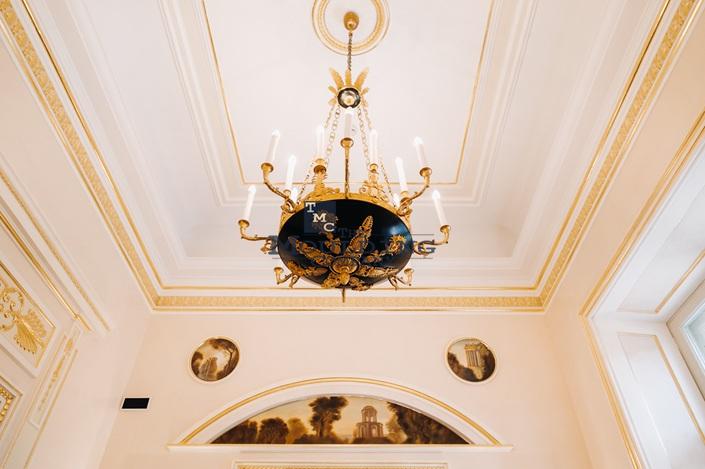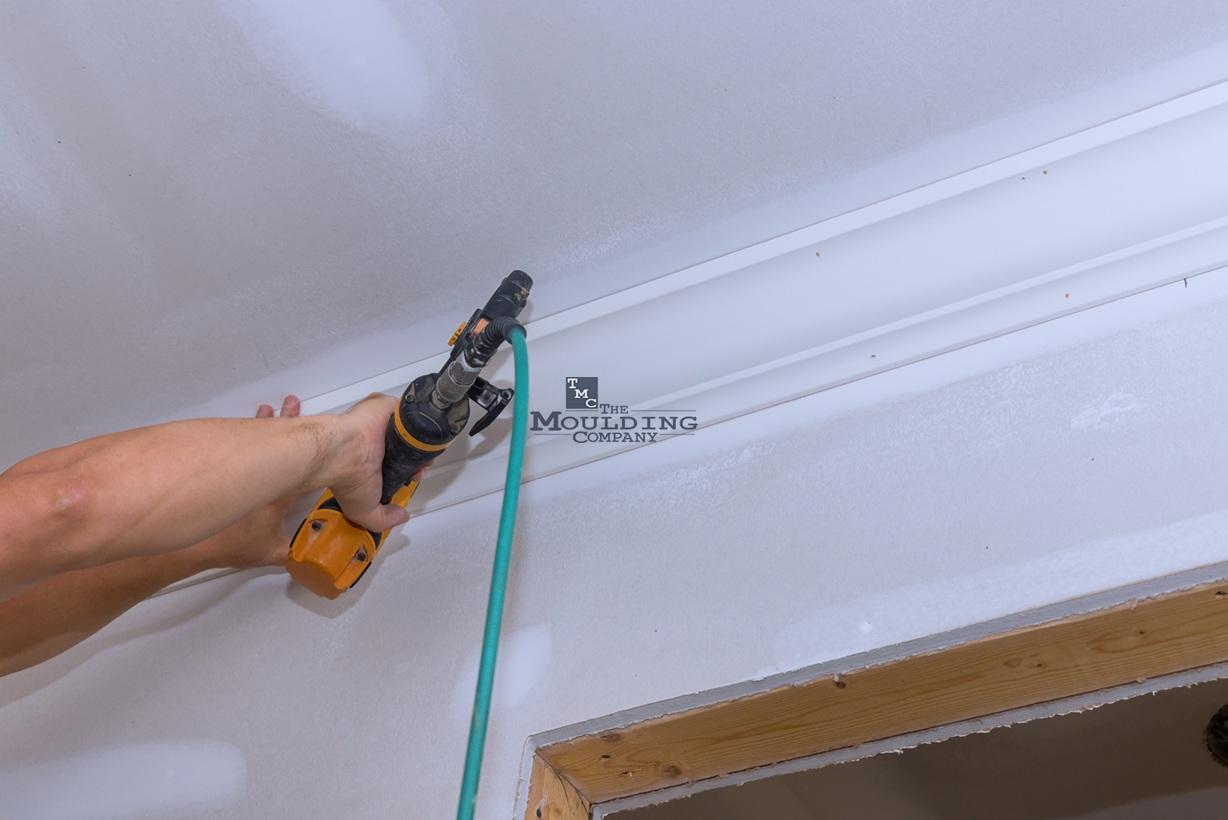
Blog
What Is Crown Moulding? -Guide to Styles and Design Ideas

If you’ve ever walked into a room and thought, “Wow, this space feels so finished,” chances are you were admiring the crown moulding without even realizing it. Crown moulding is one of those design details that quietly elevates a room, giving it polish, character, and a sense of architectural balance.
But what exactly is crown moulding? How is it used? And why do designers and builders love it so much? Let’s break it down in simple terms so you can understand what crown moulding is, what it does, and why it might be the perfect finishing touch for your home.
Understanding Crown Moulding
Crown moulding is a decorative trim that sits at the intersection where the walls meet the ceiling. Its purpose is both aesthetic and functional. Originally, it was used to hide gaps and imperfections where building materials met. Over time, it became a beautiful design feature that defines and enhances interior architecture.
Think of it as a frame for your room. Just like a picture frame gives artwork a finished border, crown moulding gives your walls and ceilings a crisp, elegant edge.
Crown moulding can be simple and modern, or detailed and traditional. It comes in many profiles, materials, and sizes, making it one of the most versatile design elements you can add to a space.
A Brief History of Crown Moulding
Crown moulding has been around for centuries. Ancient Greeks and Romans used stone and plaster mouldings to decorate palaces and temples. During the Renaissance and Baroque periods, crown moulding became more elaborate, symbolizing craftsmanship and luxury.
As architecture evolved, so did moulding styles. Today, crown moulding can be found in nearly every type of home, from minimalist California bungalows to classic colonial houses. Modern technology has also made moulding more accessible than ever, with lightweight materials and pre-primed options that are easy to install and paint.

The Purpose of Crown Moulding
While crown moulding is often seen as decorative, it serves a practical function too. It hides the joint between the wall and ceiling, which can sometimes be uneven or rough.
Beyond that, it helps visually balance a room. High ceilings can make a space feel cold or empty, but adding crown moulding brings warmth and proportion. In smaller rooms, thinner mouldings add definition without crowding the space.
Crown moulding can also highlight other features in a home, such as fireplaces, cabinetry, or entryways, tying the overall design together.
Types of Crown Moulding

There’s no one-size-fits-all when it comes to crown moulding. The style you choose should complement the architecture of your home and your personal taste. Here are the most popular types you’ll encounter:
1. Traditional Crown Moulding
This is the classic look that comes to mind when people think of crown moulding. It features smooth curves or layered profiles that create a graceful transition between wall and ceiling. Traditional styles work beautifully in formal dining rooms, living rooms, or homes with classic design elements like wainscoting and chair rails.
2. Modern Crown Moulding
Modern moulding is all about simplicity. It typically features clean, straight lines without intricate detailing. This style pairs perfectly with contemporary interiors that favor minimalism and open space. A flat or squared profile creates a sleek, architectural look that complements modern lighting and decor.
3. Craftsman Crown Moulding
Craftsman-style crown moulding embraces structure and simplicity. It’s usually wider, with defined steps or flat edges. This design is perfect for homes that highlight natural materials like wood, stone, or brick. It adds visual strength without overpowering the room.
4. Cove Moulding
Cove moulding has a concave shape with a smooth, curved surface. It’s often smaller and less ornate, making it a great choice for subtle transitions in smaller rooms or kitchens.
5. Stacked or Custom Crown Moulding
For larger spaces or dramatic ceilings, designers often “stack” multiple moulding profiles together to create a grand effect. This layered look can make a ceiling appear taller and add luxury to formal spaces like entryways or master suites.
Popular Materials for Crown Moulding
The material you choose affects the look, cost, and durability of your moulding. Here are some of the most common types:
- Wood: Timeless and natural, wood crown moulding adds warmth and authenticity. It can be stained or painted, but may expand or contract with humidity.
- MDF (Medium Density Fiberboard): A cost-effective option that’s smooth, consistent, and easy to paint. MDF crown moulding is perfect for interiors where you want a flawless painted finish.
- Polyurethane or Foam: Lightweight, easy to install, and ideal for DIY projects. These materials don’t warp or crack and are available in many styles.
- PVC: Best for moisture-prone areas like bathrooms or kitchens. It’s durable, water-resistant, and paintable.
If you’re not sure which material is right for your project, it often depends on where the moulding will be installed and whether you plan to paint or stain it.
Where to Use Crown Moulding
Crown moulding isn’t limited to just ceilings. You can use it in creative ways throughout your home to add style and cohesion.
- Ceiling Transitions: The most traditional use, creating a smooth and elegant line between the wall and ceiling.
- Cabinet Tops: Adds a custom look to kitchen cabinetry, especially in modern and craftsman-style homes.
- Door and Window Frames: Crown moulding can act as a decorative header that draws the eye upward.
- Built-Ins and Shelving: A small touch of crown trim can make built-in units look custom-made.
- Accent Walls: Layering moulding or creating framed sections on a wall adds architectural depth.
In California homes, especially in cities like Sacramento, Concord, Santa Clara, and South San Francisco, crown moulding is often used to balance high ceilings and open layouts while maintaining a light, airy feel.
Choosing the Right Size
Proportion matters when selecting crown moulding. The height of your walls and the size of your room should guide your decision.
- 8-foot ceilings: Use moulding between 3 to 5 inches tall.
- 9-foot ceilings: Choose moulding between 4 to 7 inches.
- 10-foot or higher ceilings: Go bold with moulding 6 inches or more in height, or consider a stacked profile for added drama.
If your goal is to make the room feel taller, choose a slimmer profile that blends smoothly with the ceiling. To make it feel more grounded and formal, select a taller, layered style.
Painting or Staining Crown Moulding
Once installed, crown moulding can be painted or stained to match your interior. White or off-white paint gives a timeless look and works well with both traditional and modern baseboards. For a modern aesthetic, you can even paint the moulding the same color as the wall to create a seamless effect.
If you prefer a more natural feel, stained wood adds richness and highlights the craftsmanship. Many California homes use wood-toned crown moulding to bring warmth to bright, open spaces.
When painting MDF crown molding, always prime it first. MDF is porous and needs a sealer to prevent absorption. A semi-gloss or satin paint finish works best because it’s easy to clean and subtly reflective.
Why Crown Moulding Adds Value
Adding crown moulding is one of the simplest ways to enhance your home’s value and aesthetic appeal. It creates a sense of architectural depth and luxury without major renovation costs.
Buyers often notice the detail, even if they don’t know what it’s called. A room with crown moulding just feels more finished, polished, and thoughtfully designed.
Whether you’re updating a single room or your entire house, crown moulding helps create visual continuity from space to space. It’s a small investment that delivers a big design payoff.
Installation Tips

Installing crown moulding might look intimidating, but it’s manageable with the right approach. Here are a few quick tips:
- Measure carefully and plan your cuts in advance.
- Use a miter saw to make precise angle cuts for corners.
- Prime and paint before installing if possible, to save time on touch-ups.
- Caulk the gaps along the wall and ceiling for a seamless finish.
- Work in sections and double-check your alignment as you go.
For complex rooms with lots of corners or uneven ceilings, hiring a professional installer is worth it to ensure perfect joints and symmetry.
Final Thoughts
Crown moulding may seem like a small design feature, but it has a big impact on how your home looks and feels. It frames your space, adds depth and dimension, and gives every room a sense of completion.
From traditional and craftsman styles to clean, modern baseboards and smooth transitions, crown moulding brings timeless appeal to any interior. Whether painted white for elegance or stained for warmth, it adds that subtle touch of sophistication that never goes out of style.
If you’re ready to explore different profiles, materials, and finishes, The Moulding Company offers a wide range of options to help you bring your vision to life. Visit our showrooms in Concord, South San Francisco, Santa Clara, and Sacramento, and discover how crown moulding can transform your home with simple, lasting beauty.
Frequently Asked Questions
- What is the purpose of crown moulding?
Crown moulding serves both a decorative and functional purpose. It helps disguise the joint where the wall meets the ceiling, which can often be uneven or imperfect. It also adds architectural interest, giving a room a more polished, finished look. Many people describe crown moulding as the detail that makes a space feel complete. - What rooms benefit most from crown moulding?
Crown moulding works well in living rooms, dining rooms, bedrooms, hallways, and entryways. It can also elevate kitchens by adding detail to cabinet tops, and it adds charm to built-ins or shelving. Any room where you want a sense of structure, balance, or elegance can benefit from crown moulding.
- What material is best for crown moulding?
The best material depends on the look you want and where it will be installed. Wood is ideal for warm, traditional spaces and can be stained or painted. MDF is great for painted interiors and offers a smooth finish. Polyurethane and foam crown mouldings are lightweight, budget-friendly, and perfect for DIY projects. PVC is the best choice for moisture-prone rooms like bathrooms or kitchens.
- Does crown moulding work with modern interior styles?
Yes. Modern homes often use simple, streamlined moulding profiles with clean edges. When painted the same color as the wall or ceiling, crown moulding blends into the architecture and adds subtle depth without feeling ornate. Many contemporary California homes use crown moulding to soften transitions and create a cohesive, elevated look.
- Is crown moulding difficult to install?
Installing crown moulding can be challenging because of the angled cuts required for corners. With the right tools and careful measuring, DIY installation is absolutely possible. For larger rooms or complex spaces with uneven ceilings, many people choose to hire a professional installer to ensure a perfect fit and smooth transitions.
